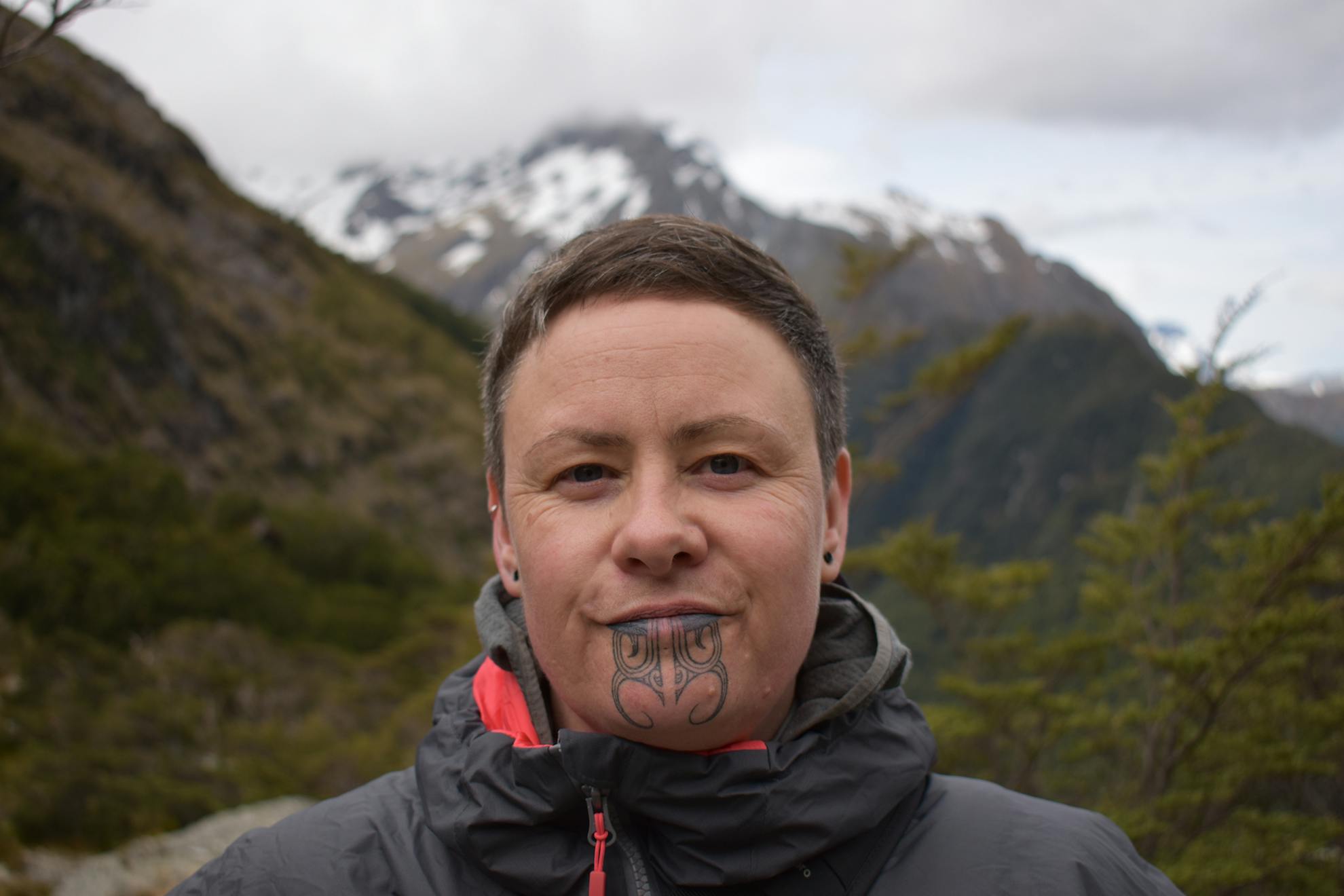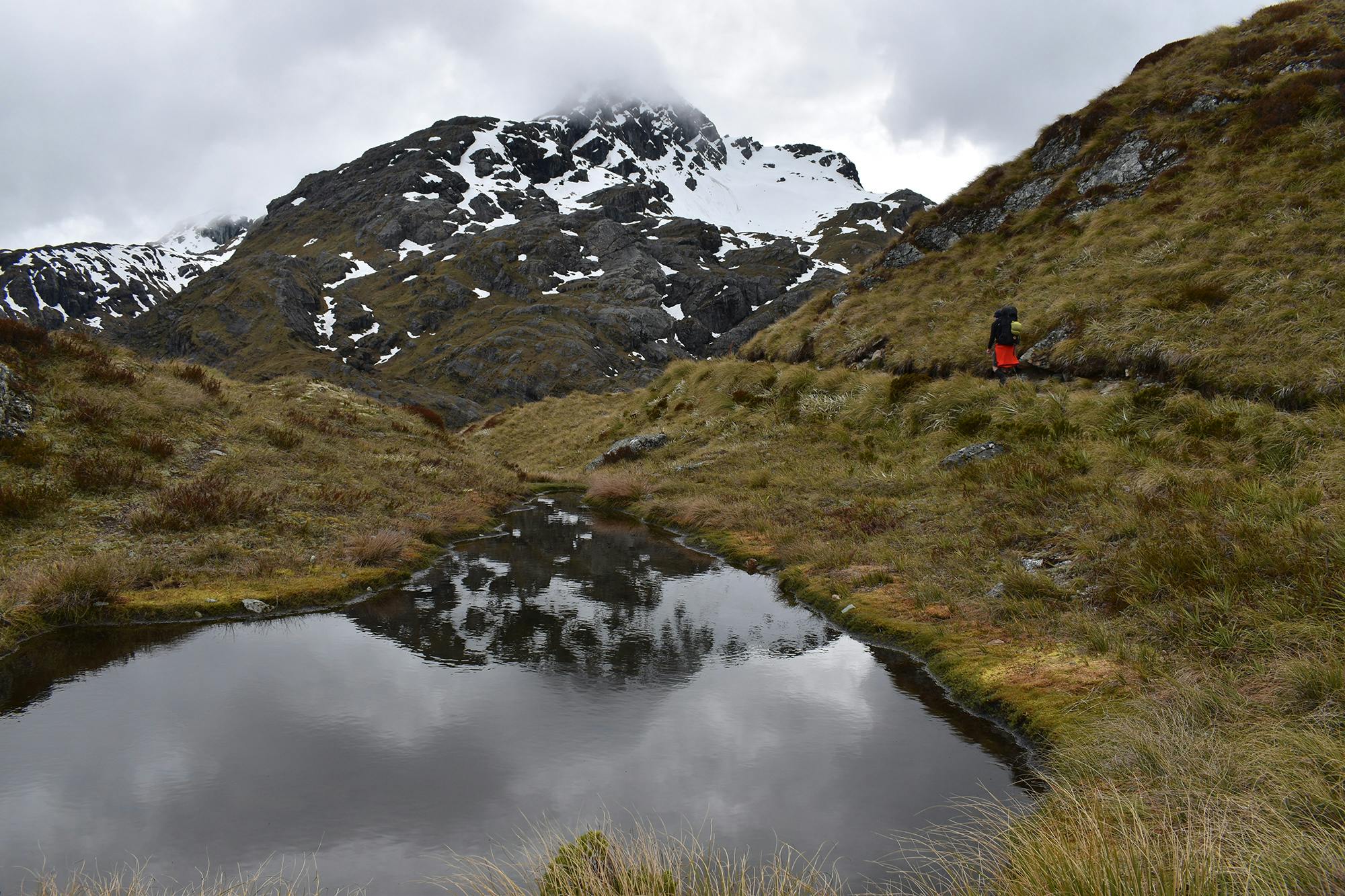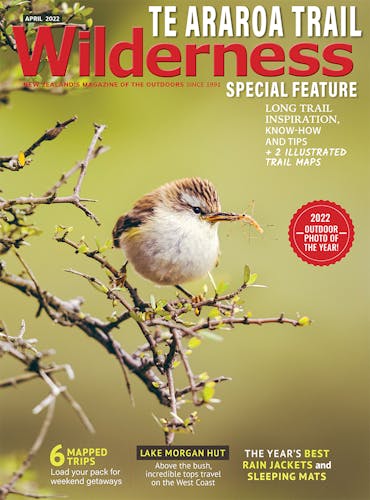Aotearoa’s Great Walks provide quintessentially diverse perspectives of the world. But can the same be said of the evening hut talks? By Tania Rae
To get to the Routeburn Track, we’d have to pass a sleeping giant: Matau, kidnapper and en-trapper of beautiful Māori maiden Manata, and whose scorched-yet-still-beating heart is considered by Ngāi Tahu to be responsible for the extraordinary rise and fall of the waters within Whakatipu Waimāori / Lake Wakatipu.
Journeying from Tāhuna-Queenstown, our waka (shuttle) would skirt the length of Matau’s resting body before eventually crossing Te Awa-Whakatipu / Dart River, and arriving at Routeburn Shelter.
It’s little exaggeration to say the Routeburn really is all things to all people; if diversity of whenua is your waka, you will find it here. Alpine buttercups feature along with goblin forest, mountain tarns, cascading water – so much water – schist rock (a tenacity test) and a scenic up-and-over at Tarahaka-Whakatipu / Harris Saddle that will leave many gasping for breath in all ways.
I found tramping Tititea / Mt Aspiring and Te Rua-o-te-moko / Fiordland national parks incredibly satisfying. I felt reconnected with Papatūānuku (Earth Mother) and Ranginui (Sky Father) on the forest floor, on the tops, and in space between.
However, both of the evening hut talks left me feeling dispirited and disconnected.
We met a lovely tauiwi (international) hut warden on our first night’s stay. After greeting our group in te reo, he described how names borrowed from his home country and embedded within the surrounding landscape had strengthened his sense of belonging, anchoring him in this part of Aotearoa.
Next was all the ‘firsts’: first non-Māori to do this, whose name is memorialised in that land feature, followed by a skimming of the relevance of the Routeburn’s environs to Ngāi Tahu, particularly as pounamu-gathering routes and sites.
By now, for me at least, a Māori main event was starting to take shape and I waited optimistically for the next step: an acknowledgement of the first ‘firsts’ in the land’s chronology. Perhaps an equally descriptive sharing of the pūrākau (story) telling of Ngāi Tahu ancestor Aoraki’s misfortune and the subsequent creation and naming of Kā Tiritiri-o-te-moana / Southern Alps and Te Waka-o-Aoraki / South Island. Because despite its position as a key creation narrative, its crux is fairly easy to retain, retell and justify as an ocean voyage gone wrong, but which leaves permanent land-based manifestations that link the natural with the supernatural, and Ngāi Tahu with ngā tūpuna (their ancestors).
From there, a handy segway presents in other parks-relevant pūrakau (stories) detailing the deeds of Aoraki’s nephew, Tūterakiwhānoa, in particular his forging by force of both Mākahi Tā Rakiwhānoa (an ancient name for Mt Aspiring) and one of Fiordland’s most famous: Piopiotahi / Milford Sound. Linked, too, is everyone’s least favourite tramping companion the namunamu (sandfly) – a prudent knee-jerk response to all of Tūterakiwhānoa’s hard labour and ‘gift’ from the Māori goddess of the underworld, Hine-nui-i-te-pō, to keep us all moving through this land at pace.
That logical step didn’t eventuate. Consequently feeling quite nixed, I shifted awkwardly, with discomfort and feelings of disconnection to these non-indigenous, non-native names and their histories. If I’d been able to will the iwi narrative into acknowledgement, I would have. I wasn’t the only Māori in the audience, but they were less conspicuous than me with my moko kauae (chin moko). Despite being so blatantly there, I felt conspicuously cancelled and I wondered how Ngāi Tahu Māori would be feeling.
Two nights spent on the fabulous Routeburn meant meeting another passionate warden, overtly generous in giving a non-Māori vocabulary and perspective. I was surprised to learn the warden was celebrating 20 years’ volunteering in this same hut, yet the talk repertoire was absent of anything Ngāi Tahu in nature.
I left both talks feeling like the recipient of an ‘either/or’ kōrero (account), where one thing is sacrificed to give energy and air to the other. In this instance, an entire chunk of iwi cosmogony. But it doesn’t need to be either/or: it could be ‘and’, meaning giving voice and mana to the entire chronology of names and narratives – even ‘firsts’. Wouldn’t that be refreshing?
I do want to acknowledge the mahi (work) that these volunteers do. Nothing I say is an attempt to diminish their mana. Āku mihi nunui ki a koutou – thank you for everything that you do to enable us all to experience Aotearoa’s natural environment with conservation and kaitiakitanga so tangibly present for Papatūānuku.
I also know how it feels to question where the responsibility of telling these stories sits and whether it’s tika (appropriate) to take that on as a non-Māori or non-native resident of a place. As someone who has taught a locale-specific nature-based education curriculum from a position of tangata whenuatanga (indigeneity) rather than mana whenuatanga (authority, governance, jurisdiction) and deep whakapapa (ancestral) connection to a particular piece of land or territory, I understand the dilemma. I’ve lived it, at times vulnerable to scrutiny from a local iwi lens. With that experience, I’ve found it’s not in anyone’s best interests to ignore the colonial elephant in the room that keeps going and growing unchecked because people keep feeding it.
A more constructive, co-constructive, response is to channel some of that naturally-occurring tramper’s tenacity and allow these pūrakau some much-needed air- and ear-time.
Because the ‘how’ isn’t hard. Acknowledging that there are knowledge gaps is a game-changer in enabling the acceptance of voices that are missing. Of course, doing something to shift the status quo and normalise indigeneity would be better. Well-known Māori stories are easy searches. The nitty-gritty sacred stuff isn’t. That content tends to be kept closer to iwi chests, and not entrusted or gifted to just anyone.
This keeps things simple and safe. So go on, be brave.
Ki te tuohu koe me he mauka teitei, ko Aoraki anake.
If you must bow, bow only to the loftiest of mountains, Aoraki himself.

Pepeha
Māori use pepeha to locate ourselves in time, space and cosmos in a way that acknowledges past, present and future. It’s an affirmation of who we are and where we come from, resounding back through ancestral generations to our creation stories and forwards through our descendants. References to specific places and land features act as anchors and enablers of whanaungatanga(kinship connections) with whānau (family members)and whenua (land-embeddedancestors like Aoraki).
Tania’s pepeha
He uri nei nō Tākitimu waka
Ko Maungaharuru me Tāwhirirangi ōku maunga
Ko Mōhaka tōku awa
Ko Ngāti Pāhauwera tōku iwi.
[I am a descendant of the canoe Tākitimu
Maungaharuru and Tāwhirirangi are my mountains
Mōhaka is my river
Ngāti Pāhauwera is my tribe.]
Mōhaka tōmairangi hei whakamākūkū, Mōhaka
te waiora.
Mōhaka the purifier,
Mōhaka the life giver.







